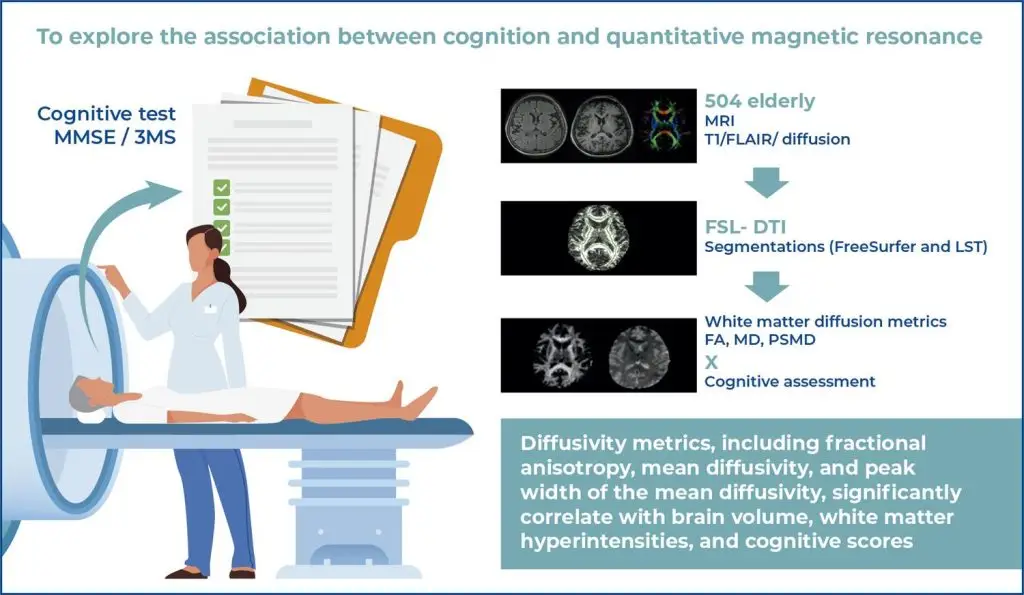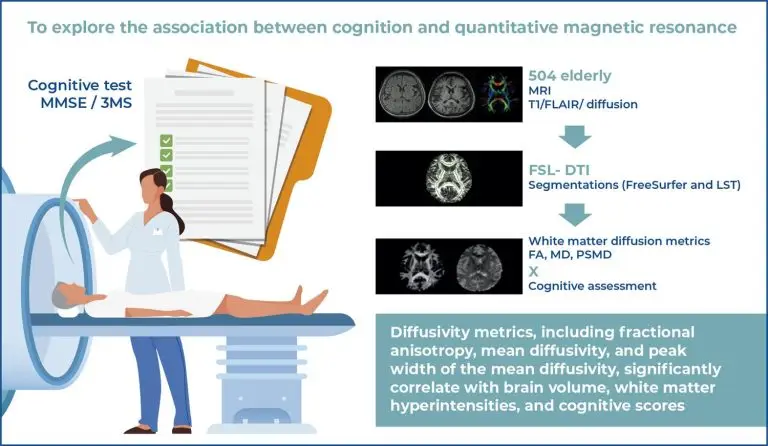einstein (São Paulo). 22/Sep/2025;23:eAO1467.
Exploring the relationship between cognitive performance and magnetic resonance imaging diffusion parameters in elderly individuals
DOI: 10.31744/einstein_journal/2024AO1467
Highlights
■ First study to investigate associations between cognitive performance and brain magnetic resonance imaging parameters in an older Brazilian population.
■ Uses advanced magnetic resonance imaging diffusion tensor imaging and automated analysis to quantify brain changes.
■ Validates findings through comparison with data from a large UK-based cohort.
■ Focuses on region-specific assessments, such as the superior longitudinal fasciculus and other key brain areas related to cognition.
■ Demonstrates significant correlation between 3MS and MMSE cognitive scores and diffusion metrics, highlighting the role of white matter integrity in cognitive aging.
ABSTRACT
Objective:
This study evaluated the association between cognitive function and quantitative magnetic resonance imaging analyses, including brain volume, white matter hyperintensity volume, and diffusivity metrics.
Methods:
This retrospective analysis included 504 older adults from São Paulo, Brazil, who underwent 3T magnetic resonance imaging scans. Image analysis was performed using the FMRIB Software Library (FSL), with peak width of mean diffusivity assessed via a public script. FLAIR signal changes were quantified using the Lesion Segmentation Tool and Fazekas scale. Cognitive performance was assessed using MMSE and 3MS tests. Multiple linear regression, adjusting for control variables, was used to evaluate the relationships between magnetic resonance imaging measurements and cognitive scores, validated against a UK Biobank sample.
Results:
Magnetic resonance imaging demonstrated strong correlations with UK Biobank dataset. Fractional anisotropy, mean diffusivity, and peak width of the mean diffusivity values were significantly associated with white matter hyperintensities (Spearman’s rho: -0.630, 0.750, and 0.747, p<0.001). Specific brain regions demonstrated strong links between fractional anisotropy and mean diffusivity values and cognitive performance. Fractional anisotropy findings correlated positively with neuropsychological scores (r=0.315 for 3MS and r=0.285 for MMSE, p<0.001).
Conclusion:
Diffusivity metrics, including fractional anisotropy, mean diffusivity, and peak width of the mean diffusivity significantly correlated with brain volume, white matter hyperintensities, and cognitive scores. These findings may serve as potential imaging markers for monitoring cognitive decline and dementia.
[…]
88



